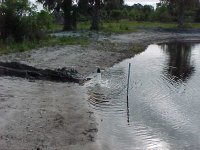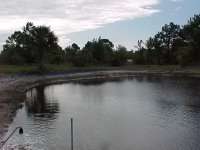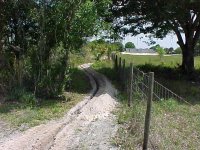At my place, there is a literal gridwork of underground utilities between the buildings and even to the dock on my lake and the island in the lake. An old college roommate owns an "underground plumbing" service. So, I've sort of had a professional do all of my work. Well, he ran the expensive equipment anyway. I got to do all the dirty work. /forums/images/graemlins/tongue.gif
First off, since I have so much underground, I can tell you that you need to bury a conductive tape along with your pipe so you can later locate it. Otherwise, being a plastic pipe, you will not be able to locate it. I don't know about you, but I'm beginning to be off just a bit on where I think things are that I buried 15 years ago. Just put me on a Ditch Witch and I'll always find a water line. /forums/images/graemlins/blush.gif
Also, I ran a 2 1/2" water line back to my place. From there, the smallest line anywhere to any place is 1". I have frost free faucets sticking up in several places that are 1". Based on that, I'd certainly just advise you to put in a large frost free faucet at your pond. I don't know how deep you have to go in your area, but I started out at 36" deep with the main line, and each successive line afterwards went under that line when crossing.
One quick thought, you may want to see what it will cost for you to have a company come out with a boring machine and just punch the line in for you. I had my college buddy use his boring machine for the last few underground additions. That is really nice! No mess, no rut, and it's simple to just set the run at whatever depth I know to be under all other utilities. Besides, I don't know how I would have added electricity to my island otherwise.
As someone else pointed out, a single solid run is much less likely to break with no joints. The stuff I had run for a water line out to my barn is extremely tough. On a really muddy day I had a concrete truck get hung up right over my water line. He sank down well over 36". As a precaution, I shut off the water to the barn to prevent an even bigger mess when he ruptured the line. As it turns out, he got two of his rear wheels around the line and sawed on it for a while. Even so, it never broke! /forums/images/graemlins/shocked.gif
After that episode, I have used a single roll of line even when not using a boring machine. A small boring machine would do what you need. It may not be too expensive if there is any competition in your area. My buddy does underground bores up to 60" now. Apparently that drill bit is rather expensive. He told me that when they get that bit stuck they dig it up; no matter where it is - under a highway or even under a building.


